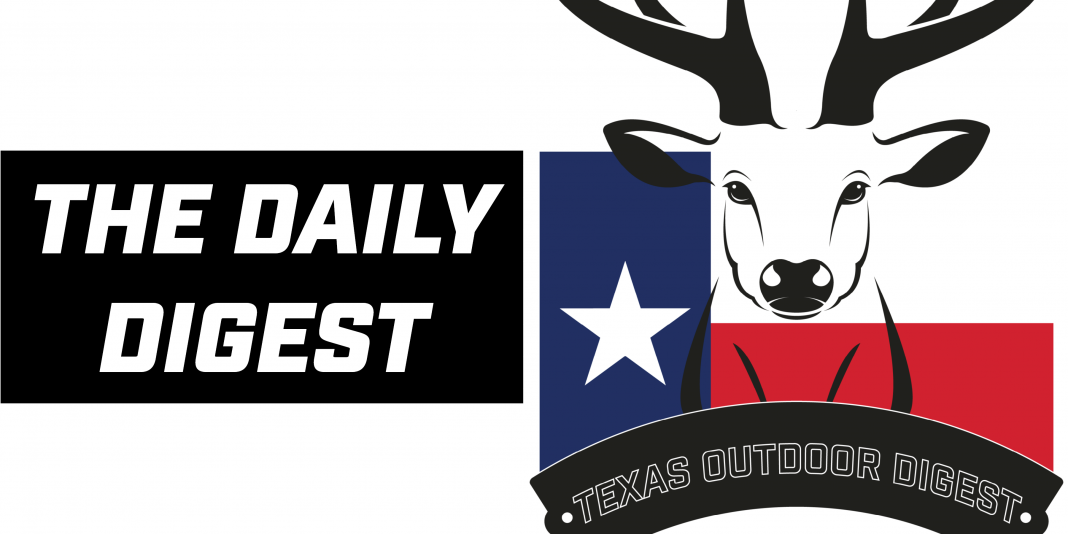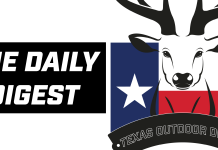The Daily Texas Outdoor Digest is sent to your inbox to keep you up to date about hunting, fishing, conservation and outdoors pursuits making headlines and going viral in the Lone Star State and beyond. It’s free, so subscribe today!
Here’s what’s worth reading today, Wednesday, August 19, 2020:
Texas dove hunting forecast good heading toward September staple
Trump administration announces ‘largest’ historic expansion of hunting, fishing on 2.3 million public acres
The great outdoors just got a little grander. The Trump administraion has opened and expanded more than 850 hunting and fishing opportunities across 2.3 million public acres, touted as the largest historic expansion of its kind.
The Interior Department announced the news on Tuesday, confirming the new recreational access at 138 national wildlife refuges and 9 national fish hatcheries, marking the “single largest” expansion of such opportunities by the U.S. Fish and Wildlife Service in agency history.
“On the heels of President Trump signing the most significant conservation and recreation funding in U.S. history, providing nearly $20 billion over the next 10 years to fix and conserve the American people’s public lands, the Trump administration has now made an additional 2.3 million acres accessible to new hunting and fishing opportunities,” U.S. Interior Secretary David Bernhardt said in a statement. “We continue to take significant actions to further conservation initiatives and support sportsmen and women who are America’s true conservationists.”
Director of the Fish and Wildlife Services Aurelia Skipwith praised the Trump administration and Bernhardt for prioritizing outdoor recreation for the public since “day one.”
“Hunting and fishing are a part of our American history, and we continue to ensure we provide opportunities for these activities which epitomize our American heritage,” Skipwith said. “Furthermore, we have maintained our commitment to promoting good government by reducing the regulatory burden by working with states to facilitate these outdoor activities.”
With Canada closed, duck hunters will pile into North Dakota this year
With the prairie provinces of Canada most likely off limits to most Americans this year, North Dakota is bracing for an onslaught of waterfowl hunters who have been crossing the border for decades.
“It could be a real zoo,” said Al Afton, a hunter and wildlife ecologist who lives near Bemidji. “North Dakota will be shoulder to shoulder.”
Afton, an adjunct professor of renewable natural resources at Louisiana State University, said the global coronavirus pandemic will lessen pressure and disturbance on ducks and geese as they begin their migration from arctic and sub-arctic breeding grounds. A decision is expected soon on whether to keep the international border closed to nonessential visitors past Aug. 21, but most people believe it will stay closed for months.
It’s unclear what that means for waterfowlers hiding behind cattails in Minnesota and other places in the north-central flyways of the U.S. Part of the uncertainty stems from the lack of reliable data this year on the birds’ breeding success. COVID-19 social distance restrictions kept many wildlife agencies in the U.S. and Canada from surveying habitat conditions and production of young.
“We don’t have much quantified data,” said Afton, who has hunted waterfowl in Canada every fall since 1973. “We don’t know what the flight will look like.”
In Saskatchewan and elsewhere in Canada, American duck hunters outnumber resident hunters. Of the 17,000 licensed waterfowl hunters in Saskatchewan in 2018, 54% were nonresidents.
Hunting tourism in Alaska drops amid COVID-19 restrictions
Hunting season draws thousands of outside tourists to Alaska every year. In 2019, the Alaska Department of Fish & Game sold 15,897 non-resident hunting licenses. The department says the coronavirus pandemic has crushed demand for non-resident hunting. So far, the department has sold only a quarter of that. As of Aug. 12, the number of non-resident licenses was at just 3,594.
Ryan Scott, an assistant director for Fish and Game, says Outside hunters are still interested in coming to the state, but have to contend with travel restrictions and local requirements. And some hunters have already decided now it is not a good time for them to travel.
“I think a lot of hunters are having to really think through how to accomplish the hunt that they want to do and do it responsibly,” Scott explains, “I talked to a fair number of them at this point and they are taking it very seriously and they want to do the right thing and they also want to come hunt so many of them have figured out how to make that work for them.”
Among the factors complicating the season for Outside hunters is the state requirement that travelers be required to have negative tests from their home states before leaving for Alaska, or they will be required to pay $250 for a test when they land at the airport.
Scott pointed out that the department cannot enforce additional safety regulations for non-resident hunters. Still, he said, they are doing their best to provide information on state health mandates, and they strongly encourage hunters to follow local rules.
“Whether it be a resident hunter or a non-resident hunter that might be traveling to a different community,” he said. “We certainly make them aware of the state travel website so they can see the statewide mandate. We also encourage people to make sure they communicated if they are going into a community that they’ve looked at their requirements as well.”
Other Stuff That Might Tickle Your Fancy
They’re evolving!! pic.twitter.com/rfpcwIzooL
— Lisa Thorne (@LisaHunting) August 16, 2020
Next time you come across someone's trail camera, "Strike a Pose", don't steal it. Let's support each other in this community. Photo shared by Jeff Wirth (@burningxjeff TW) #IAMSPORTSMAN #pose #camera #hunter #trailcamera #hunting pic.twitter.com/qhd1vmR4gP
— Sportsman Channel (@SPORTSMANchnl) August 11, 2020
Want to get the most out of your deer? Learn what each cut is best used for with this guide, complete with a venison processing chart and recipe suggestions via @NAWhitetail: https://t.co/jqDPUkgqYo#IAMSPORTSMAN #whitetails #venison #wildgame #fieldtofork #deer pic.twitter.com/8mocnFCSFU
— Sportsman Channel (@SPORTSMANchnl) August 19, 2020
Stay in the Know With The Daily Texas Outdoor Digest
If you haven’t subscribed yet, there’s no better time than right now (We hate spam and we won’t share your information with anyone. That’s just not cool):




















